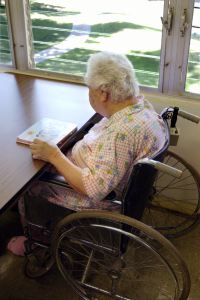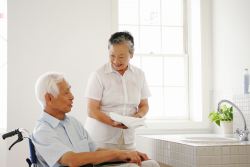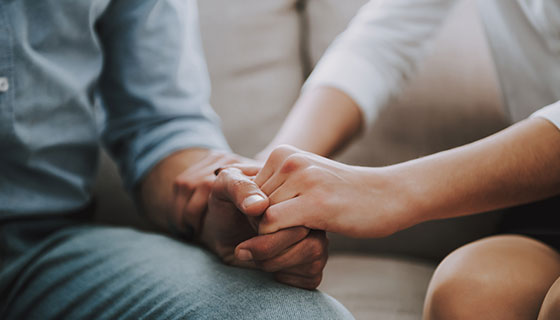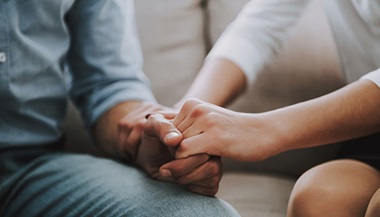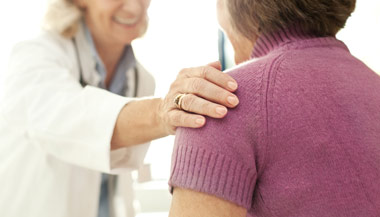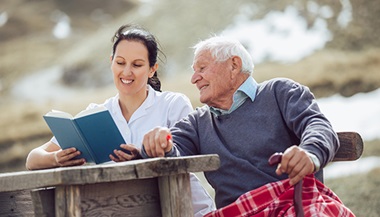Pressure Injuries
Pressure injuries, also called bedsores or pressure sores, can develop when you are confined to a bed or chair.
When you rarely move, your body weight restricts the blood flow to your arms, legs, neck, and back. The lack of blood flow to the skin and tissues under the skin may cause them to break down until a sore appears.
People who use wheelchairs for much of the day or who must stay in bed for long stretches of time are at greatest risk for this type of injury. Pressure injuries tend to surface on parts of the body where the skin is mashed between a bone and a surface such as a wheelchair or mattress. Pressure injuries can develop quickly, sometimes in as little as several hours without movement.
Facts about pressure injuries
Pressure injuries are most likely to occur in older adults, particularly those who live in nursing homes. Studies show that more than 1 in 10 nursing home residents have suffered from a bedsore.
Those with chronic illnesses like diabetes and those who are under nourished are at greater risk. People who smoke or have fragile skin are also at greater risk for sores.
If found and treated quickly, pressure injuries should heal within a matter of weeks. But if left untreated, they can quickly worsen.
Symptoms
Pressure injuries start as red, blue, or purplish patches on the body. They don't blanch, or turn white, when touched and they get worse over time. These patches can quickly develop into blisters and open sores. The sores can then become infected and grow deeper until they reach muscle, bone, or joints.
Pressure injuries are found on areas of the skin that are closest to bone and have little fat to pad them. This includes the heels, hips, elbows, ankles, the back, and shoulders. The affected skin may feel warm, smell bad, and look swollen. A fever, chills, or confusion can develop if the infection spreads to the bloodstream.
In the worst cases, pressure injuries can become life threatening. That's why it's crucial to contact a healthcare professional at the first sign of a pressure injury—often a soft, red patch of skin that stays red for 30 minutes even after the pressure is relieved. In people with dark skin tones, call a nurse or another healthcare professional if a patch of skin turns darker or is warm to the touch.
Stages of pressure injuries
Pressure injuries have 4 stages, ranging from an early warning signal to the most severe:
Stage 1. A red, blue, or purplish area first appears on the skin like a bruise. It may feel warm to the touch and burn or itch.
Stage 2. The bruise becomes an open sore that looks like an abrasion or blister. The skin around the wound can be discolored and the area is painful.
Stage 3. The sore deepens and looks like a crater, often with dark patches of skin around the edges.
Stage 4. The damage extends to the muscle, bone, or joints and can cause a serious infection of the bone, known as osteomyelitis. It can also lead to a potentially life-threatening infection of the blood called sepsis.
Diagnosis
Doctors and nurses working with people in the hospital can spot bedsores. So can health aides helping with cleansing and dressing. If you are restricted to bed at home, watch for any reddish patches or sores on your body. Ask family and friends who visit to check for an injury to bony areas and elsewhere.
Treatment
Even in the early stages, bedsores should be treated right away because they can worsen quickly. Propping up the leg or area near the injured body part with a pillow or foam cushion will help relieve pressure on the area so it can start to heal. To reduce friction between the skin and the bed, powder the sheet with a special formula that can be found in medical supply stores.
If the injury has become an open sore, follow a doctor's instructions on how to clean the area to prevent infection. Generally, pressure injuries are cleaned with saline or saltwater to dislodge dead tissue, and the sore is covered with a special bandage. A healthcare practitioner can prescribe special dressings and therapies that speed up skin healing.
Nutrition plays an essential role in pressure injury healing. The body needs enough calories, protein, and nutrients such as vitamin C and zinc to heal properly.
The most severe sores may require a stay in the hospital to combat infection or surgery to add muscle flaps or skin grafts.
Prevention
If on bed rest: To prevent pressure injuries, relieve pressure on the skin by changing your body position at least every 2 hours. Check to make sure that the bedding is smooth and that one leg isn't lying on top of the other—put a pillow between your legs if lying on one side. Raise your heels slightly off the mattress with a pad or foam (avoid doughnut-shaped pads).
If using a wheelchair: Shift positions every 10 to 15 minutes. If that isn't possible, have someone move you at least once an hour. If you have a neuromuscular disease, you may benefit from shifting to a standing wheelchair at intervals to relieve the pressure on your buttocks. Doing wheelchair "pushups" can also help.
If you are immobile or are caring for someone who is: Consider buying an alternating air mattress, which can greatly reduce the pressure against the skin. This type of mattress has alternating cells that inflate and deflate to increase blood circulation. You might also ask your doctor about new technologies to detect pressure injuries. Check with your insurance company or Medicare to see what is covered.
If lifting someone who is immobile: Use sheets or a harness rather than pulling on the person's arms or legs. This is because skin is often fragile and easily injured.
Here are other good habits that can help:
Take good care of skin in general. Wash soiled areas right away with warm (not hot) water and soap, and moisturize dry skin. It's also crucial to keep skin warm and dry, because too much moisture can increase the risk for skin infection.
Eat a well-balanced diet and drink 8 to 10 cups of water a day. This will help keep blood flowing properly, which helps prevent sores from forming.
If possible, exercise daily or, if you are immobile, ask caregivers to move your limbs gently to exercise them.
Avoid smoking and exposure to secondhand smoke. This is also important for wound healing and optimal health.

